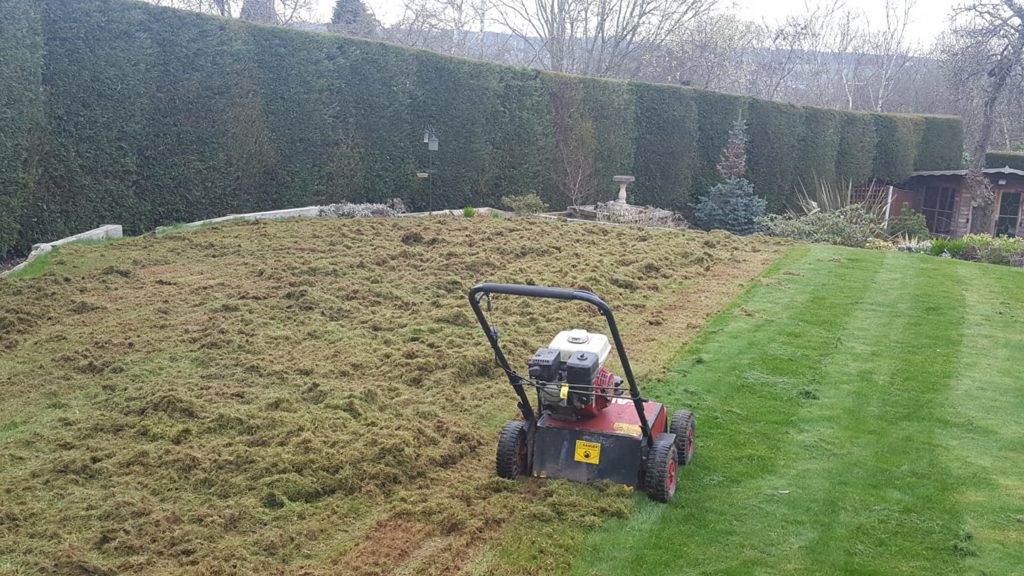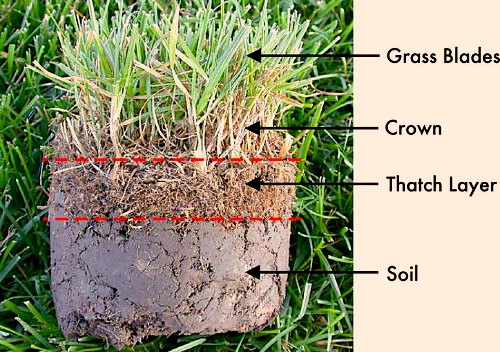Why, When and How?
Lawn scarification is the mechanical process of raking the lawn to remove thatch and moss.

Thatch is an accumulation of organic matter within your lawn. It is made up of dead roots and shoots that fail to decompose quickly enough. The roots of the grass will begin to grow in to it, rather than in to the soil, which will have an affect on your lawns condition. Thatch is generally caused by poor lawn care practices, over feeding and poor aeration being just two. When thatch becomes too thick it will cause problems within your lawn.

Most lawns will see moss in them at some point. Moss is spread by spores produced by the plant which are blown around. The amount of moss present will depend on a number of factors. It can be unsightly and is the result of poor conditions.
Both moss and thatch can have a detrimental affect on your lawn. Moss looks unsightly and chokes the grass in your lawn. Thatch will prevent air, water and nutrient movement to the soil. Removing these barriers is just part of a good lawn care programme.
There are two periods during the year when conditions are ideal for scarification. Scarification not only removes unwanted trash but can promote grass growth. The best times to scarify your lawn are March/April and September/October, dependant on weather conditions.
There are many scarifiers on the market from cheap electric ones to expensive, professional petrol scarifiers. Scarification is always best carried out by an expert. You can easily ruin your lawn by over scarifying. Over seeding may be required depending on the amount of thatch and moss that is removed. If the weather is dry then you are advised to water to aid with your lawns recovery.